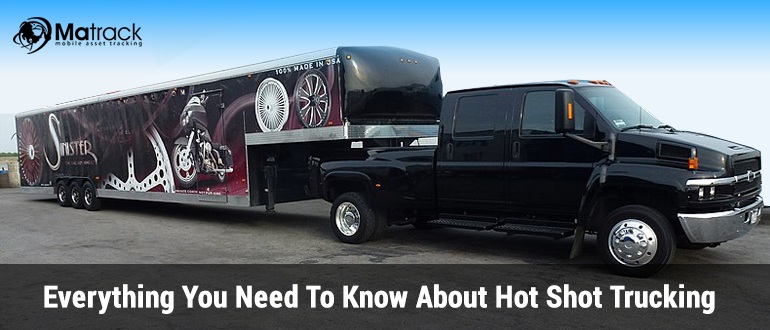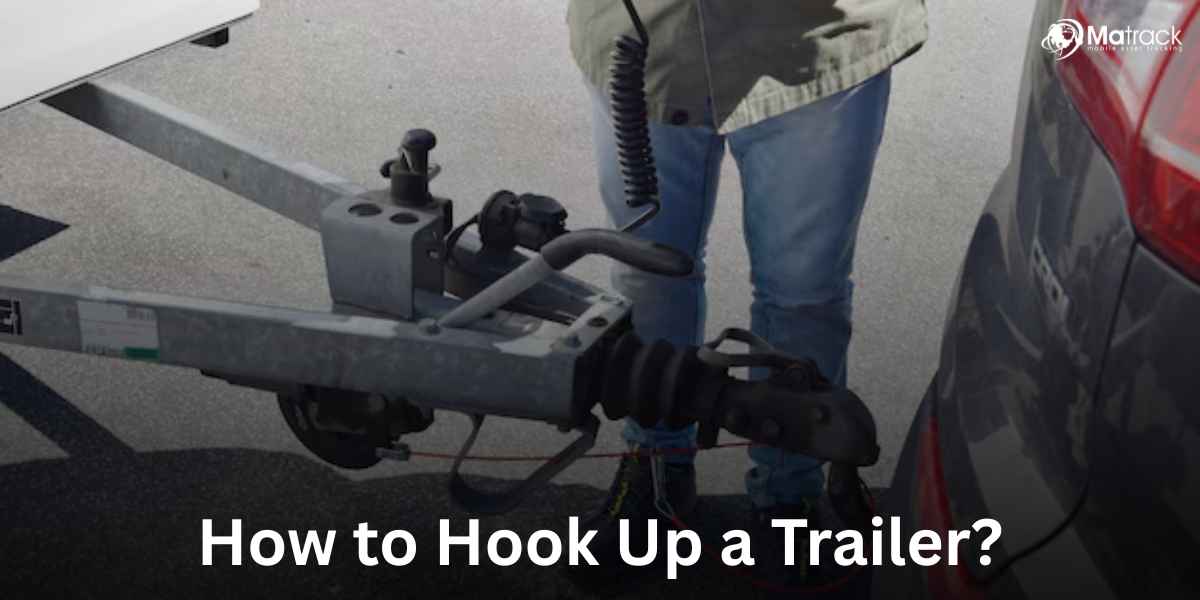Key Takeaways
- Hot shot trucking is a fast and cost-effective way to transport urgent, small-to-medium loads using pickup trucks and trailers.
- To start, you need a reliable truck, trailer, insurance, and the necessary legal permits to operate within state and federal regulations.
- Finding loads requires using load boards, working with freight brokers, securing direct contracts, and networking for steady work.
- Success depends on managing expenses, keeping your truck well-maintained, and building long-term relationships with shippers.
What is Hot Shot Trucking?
Hot shot trucking is a type of trucking where drivers use medium-sized pickup trucks and trailers to deliver smaller, urgent loads. Unlike big semi-trucks, hot shot truckers usually work within local or regional areas and focus on fast deliveries.
Main Features of Hot Shot Trucking:
- Fast Deliveries – Used for urgent shipments that need quick transport.
- Smaller Trucks & Trailers – Uses pickup trucks (Class 3 to 5) instead of large semi-trucks.
- Shorter Trips – Most deliveries are within a few hundred miles.
- Independent Drivers – Many hot shot truckers own their trucks and work for themselves.
Who Needs Hot Shot Trucking?
- Construction Companies – Transport building materials, equipment, and machinery.
- Oil & Gas Industry – Deliver pipes, valves, and drilling tools to remote locations.
- Agriculture – Ship farm equipment, seeds, and animal feed.
- Manufacturing – Move machinery parts and industrial supplies.
- Auto Industry – Deliver car parts and engines to mechanics or dealerships.
- Emergency Freight – Transport critical supplies for hospitals and disaster relief.
Hot Shot Trucking Equipment: What Do You Need?
To start a hot shot trucking business, you need the right equipment. Here’s what is required:
Truck
Hot shot trucking primarily uses medium-duty trucks from Class 3 to Class 5:
- Class 3 (10,001–14,000 lbs GVWR) – Ford F-350, RAM 3500, Chevy Silverado 3500
- Class 4 (14,001–16,000 lbs GVWR) – Ford F-450, RAM 4500
- Class 5 (16,001–19,500 lbs GVWR) – Ford F-550, RAM 5500, Chevy Silverado 5500
Trailer
The trailer type depends on the cargo being hauled. Common hot shot trailers include:
- Gooseneck Trailers – High weight capacity, excellent stability.
- Flatbed Trailers – Ideal for oversized or oddly shaped cargo.
- Step Deck Trailers – Accommodate taller loads that exceed height limits.
- Enclosed Trailers – Protect delicate or valuable goods from weather.
Essential Accessories
- Straps & Chains – Secure cargo during transit.
- Tarps – Protect loads from rain and wind.
- Toolbox – Store spare parts, tools, and emergency kits.
- Winches – Assist in loading heavy equipment.
How to Start Hot Shot Trucking
Starting a hot shot trucking business requires planning, investment, and legal compliance. Follow these steps to set up your operations successfully.
Choose the Right Truck and Trailer
Invest in a reliable truck (Class 3 to Class 5) and a suitable trailer based on the type of loads you plan to haul. Popular options include gooseneck, flatbed, and enclosed trailers.
Register Your Business
Decide on a business structure (LLC, sole proprietorship, or corporation) and register your business with the appropriate state and federal agencies.
Get a USDOT and MC Number
Obtain a USDOT number (required for interstate trucking) and an MC number if you plan to haul loads across state lines. You can apply through the Federal Motor Carrier Safety Administration (FMCSA).
Secure Insurance Coverage
Hot shot trucking requires liability, cargo, and physical damage insurance. FMCSA mandates a minimum of $750,000 in liability coverage, but most brokers prefer $1 million.
Obtain the Necessary Licenses and Permits
- A Commercial Driver’s License (CDL) is required if your truck and trailer exceed 26,001 lbs.
- Apply for apportioned plates and International Registration Plan (IRP) if operating across multiple states.
- Enroll in the International Fuel Tax Agreement (IFTA) for tax reporting on fuel purchases.
Read more: CDL For Hotshot Hauling
Purchase Essential Equipment
Stock up on necessary items like ratchet straps, chains, binders, tarps, and a toolbox to secure and protect cargo properly.
Find Loads and Clients
- Use load boards like DAT, Truckstop, and 123Loadboard to find shipments.
- Network with local businesses, freight brokers, and shippers for direct contracts.
Know more: How to find load.
Manage Expenses and Maintain Your Truck
Track fuel costs, maintenance, and other expenses to maximize profits. Regularly service your truck and trailer to avoid breakdowns and costly repairs.
Stay Compliant with FMCSA Regulations
Maintain logbooks, inspection records, and necessary documentation to meet safety regulations and avoid fines.
Check out: Best ELD Devices
Costs Involved in Hot Shot Trucking
| Expense | Estimated Cost |
| Truck | $50,000 – $90,000 |
| Trailer | $10,000 – $30,000 |
| Insurance | $5,000 – $15,000 per year |
| Licensing & Permits | $500 – $3,000 |
| Fuel | Varies based on miles driven |
| Maintenance | $5,000 – $10,000 per year |
| Miscellaneous | $2,000 – $5,000 |
The total startup cost can range from $20,000 to $100,000, depending on equipment choices.
Pros & Cons of Hot Shot Trucking
Pros
- Lower Startup Cost – Cheaper than running a semi-truck operation.
- Flexible Schedule – Work when you want; no fixed routes.
- High Demand – Many industries require urgent freight services.
- Quick Payments – Many loads pay immediately or within a week.
Cons
- High Fuel Costs – Gasoline and diesel prices impact profitability.
- Vehicle Wear & Tear – More frequent maintenance due to heavy loads.
- Market Competition – Many truckers compete for high-paying loads.
- Seasonal Slowdowns – Demand can drop in certain months.
How to Find Hot Shot Loads?
Load Boards
Load boards are websites where truckers can find available shipments posted by shippers. Popular ones like DAT Load Board, Truckstop, 123Loadboard, and Direct Freight Services help truckers find loads quickly.
Freight Brokers
Freight brokers act as middlemen between truckers and shippers, helping to find freight that matches your truck’s capacity. They take a small commission but can provide consistent work without the hassle of searching for loads.
Direct Contracts
Working directly with local businesses, manufacturers, and construction companies gives you steady loads without paying broker fees. Building relationships with these companies can lead to long-term contracts and regular work.
Networking & Word-of-Mouth
A good reputation in the industry helps attract more customers and referrals from past clients. Attending industry events, joining trucking groups, and staying professional with every delivery can lead to more business opportunities.
Tips for Success in Hot Shot Trucking
- Choose the Right Truck & Trailer – Invest in reliable, fuel-efficient equipment.
- Manage Expenses Wisely – Reduce fuel costs and unnecessary repairs.
- Stay Organized with Paperwork – Keep logs, receipts, and permits updated.
- Maintain Your Truck Regularly – Prevent breakdowns with routine maintenance.
- Use Load Boards Efficiently – Optimize routes to maximize profit.
- Deliver Excellent Customer Service – Timely and professional service builds trust.
- Understand Freight Rates – Negotiate rates based on market demand.
Is Hot Shot Trucking Right for You?
Hot shot trucking is a profitable business if you enjoy driving, have an entrepreneurial mindset, and can handle tight deadlines. It offers flexibility and decent earnings, but it requires dedication, investment, and business knowledge.
Who Should Consider Hot Shot Trucking?
- Owner-operators looking for independence.
- Drivers wanting a lower-cost entry into trucking.
- Individuals with experience in logistics or transportation.
- Those comfortable with managing loads, invoices, and business operations.
Conclusion
Hot shot trucking is a solid choice for those who want independence and a steady income without the high costs of running a full-size semi-truck. With the right truck, trailer, and business setup, it’s possible to make a good living while staying flexible with your schedule.
Like any business, success comes from proper planning, managing expenses, and building strong relationships with clients. Keeping your truck in top shape, staying on top of regulations, and consistently finding loads will help you grow and sustain your business in the long run.






